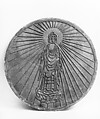

In ancient Japan, mirrors were especially revered as rare and mysterious objects. During excavations of the Kurotsuka kofun (tomb) in Nara, archeologists discovered 33 similar bronze mirrors dating to the 3rd-7th centuries.

The Emperor Cao Rui and the Wei Court of China reputedly gifted numerous bronze mirrors (then known as shinju-kyo in Japan) to Queen Himiko of Wa (Japan). They were regarded as sacred because they were thought to hold magical properties.Īs use of bronze mirrors became widespread in China, the ancient craft of mirror-making spread to neighboring Korea and Japan. The back is often decorated with patterns or plant depictions. Usually circular, they later evolved into a variety of forms, from oblong to octagonal.Īntique bronze mirror from Kokugakuin museum. Bronze mirrors became popular and were produced in large quantities during the Han Dynasty (206 BCE–24 AD) in China. Bronze, a highly-reflective alloy of copper, tin and lead, can be either gold or silver in color. The ancient craft of bronze mirror-making dates back to 2900–2000 BCE in China, Egypt and the Indus Valley. Many thanks to Lisa Yamashita Allen for shaping and polishing… Interview by Jodie Moon with Paul Carty Translation by Masako Kaidan Below are extracts for the more lengthy original article, please see here. In its latest online edition, the wonderful Kyoto Journal carries an absorbing article and interview with the last remaining maker of ‘magic mirrors’.

(See here for example.) Recently too we had a feature on the recreation of a magic mirror that might have once belonged to the early empress, Himiko. This blog has carried several articles ‘reflecting’ on the special properties of the mirror, and why it would have had a mesmerising effect on bronze-age people. Mirrors play a central part in Shinto, for they are thought to contain the body of the kami.


 0 kommentar(er)
0 kommentar(er)
